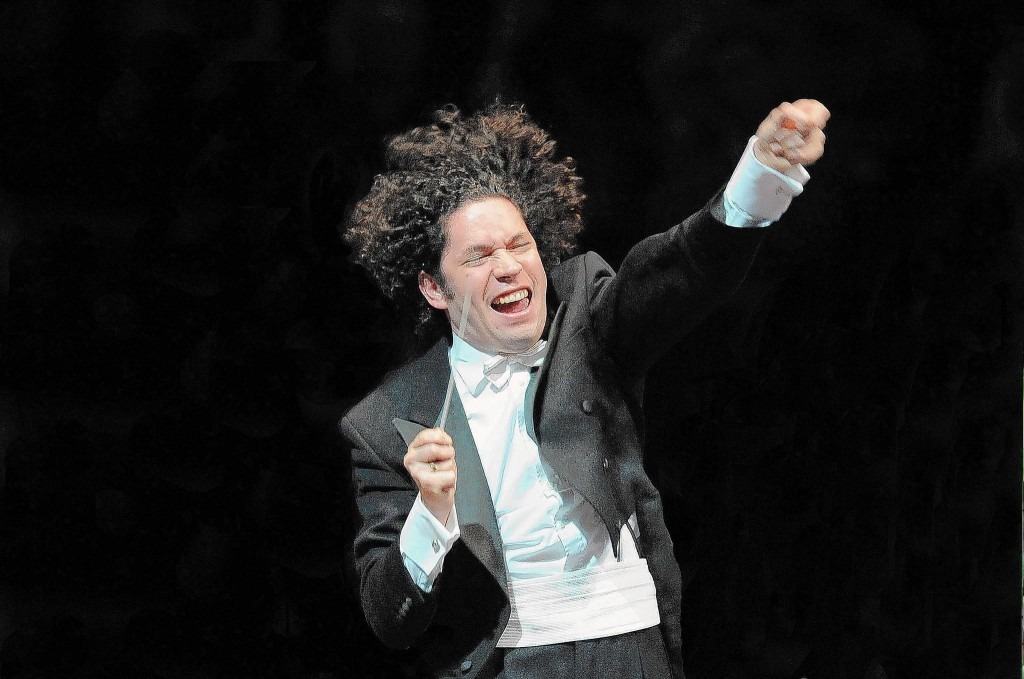
Dudamel
Credit: http://www.trbimg.com/
Let’s first take a look at a variety of conductors and their styles:
Arturo Toscanini doesn’t conduct the beat so much as lead the music.
Richard Strauss conducts the beats, but doesn’t otherwise seem to move
Herbert von Karajan is a whole-body conductors, but in a restrained manner. Both hands are active, but he’s not moving around the podium
Bernstein doesn’t seem to conduct as much as dance the piece:
Zubin Mehta uses his whole body
Valery Gergiev seems to conduct with a toothpick:
Whole-body conducting with Gustav Dudamel!
If you’ve ever seen James Levine conduct, close up, you’ll see that he sings along with the music.
Now that he’s conducting from a wheelchair, his movements are a bit more constrained but he still has a great deal of exuberance.
When you put a conductor up in front of an orchestra, his real role depends on what the orchestra is doing. If it’s playing an orchestral concert, then he’s the focus of the attention of the orchestra, and, more importantly, the orchestra is his focus. When it’s an opera, the conductor has many more responsibilities. The conductor has to lead both the orchestra and the singers and, as one singer noted, “I don’t want to look to my conductor and just see the top of his head!”
Sometimes, however, particularly with conductors who are unused to leading small orchestras, you might find that they are using gestures to communicate to a full symphony orchestra, but all that they’re leading is a small ensemble – that’s when you realize that the conductor’s role is very dependent upon the ensemble he’s leading.


